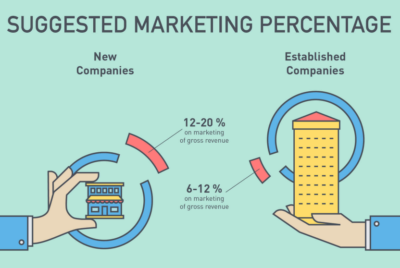Is Your Marketing Budget As Big As Your Dream?





by Tony Vidler ![]()
![]()
![]()

Nobody likes a budget – even financial advisers don’t. But a marketing budget for your business is a good budget…it’s an investment in growth. Even well established advisory firms usually want growth as they usually want to do more business with higher value and more challenging client cases. For early stage advisory practices the marketing budget willll often determine whether they thrive at all.
Setting the budget is one thing, but it is not the main thing. The main thing is figuring out where the best return on investment will be achieved. The main thing for this particular post though is just the boring old budget question:
Or as I prefer to put it:
Marketing experts certainly agree that smaller or newer enterprises need to allocate a lot more proportionately – perhaps double the amount – that their larger competition allocate to marketing. That makes sense of course as there is a lot of ground to make up if you are a small firm wanting to become a big firm. So a rule of thumb from the marketing industry for the small firm is that you need to spend between 12% and 20% of your gross revenue on marketing to start making some serious inroads.

Bigger firms (in revenue terms) genrally need to spend perhaps half that. These ratio’s certainly hold true when one considers some of the findings from loads of research into what the most successful advisory practices do differently to the ordinary ones.
Top end advisory firms of course are “established” businesses most of the time and just over 70% of them spend allocate between 3% and 9% of gross turnover to ongoing marketing. About another 20% or so spend more than 10% of gross revenue on marketing.
So over 90% of the most successful advisory firms are allocating a serious proportion of gross revenue (3%-10% +) on marketing.
Compare that to many smaller practices or individual professionals running what one might call “lifestyle businesses”, and usually when I ask what allocation they have for their future marketing the answer is 1% or 2%. That may be entirely adequate if there is no real desire to generate significant volumes of new business or to grow the practice any further. These are “lifestyle businesses” after all, and maintaining the status quo might be a reasonable business objective for some professionals.
But for those that do want something beyond a lifestyle business that is just not enough. If there is a dream to build the practice into something much more substantial then the willingness to invest in growth has to at least match the scale of the dream.
If exponential growth (however you choose to measure that) is the objective then the marketing budget has to be big enough to achieve it in the first place. Obviously one has to be thoughtful and clever about where and how to use that resource to achieve the goals, but the first decision the aspirational business owner must make is how much to allocate to pursuing the dream.
For those who want exponential growth and are willing to do what is required to achieve it a marketing budget of around 20% of gross revenue is a starting point. More than that if you can afford to.
As Peter Drucker famously said:
“All business is marketing”.
So make sure the amount you’re willing to commit to marketing matches the size of your business dreams. The two go hand in hand.
Comments (0)